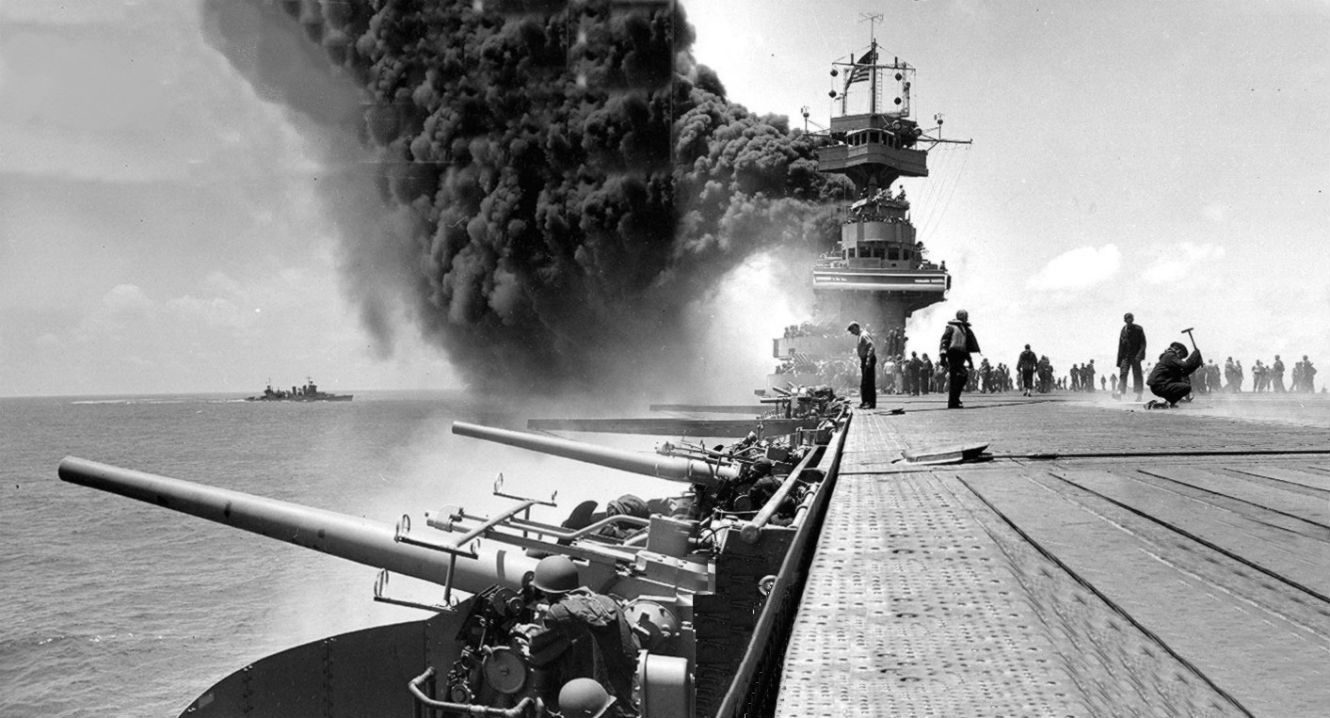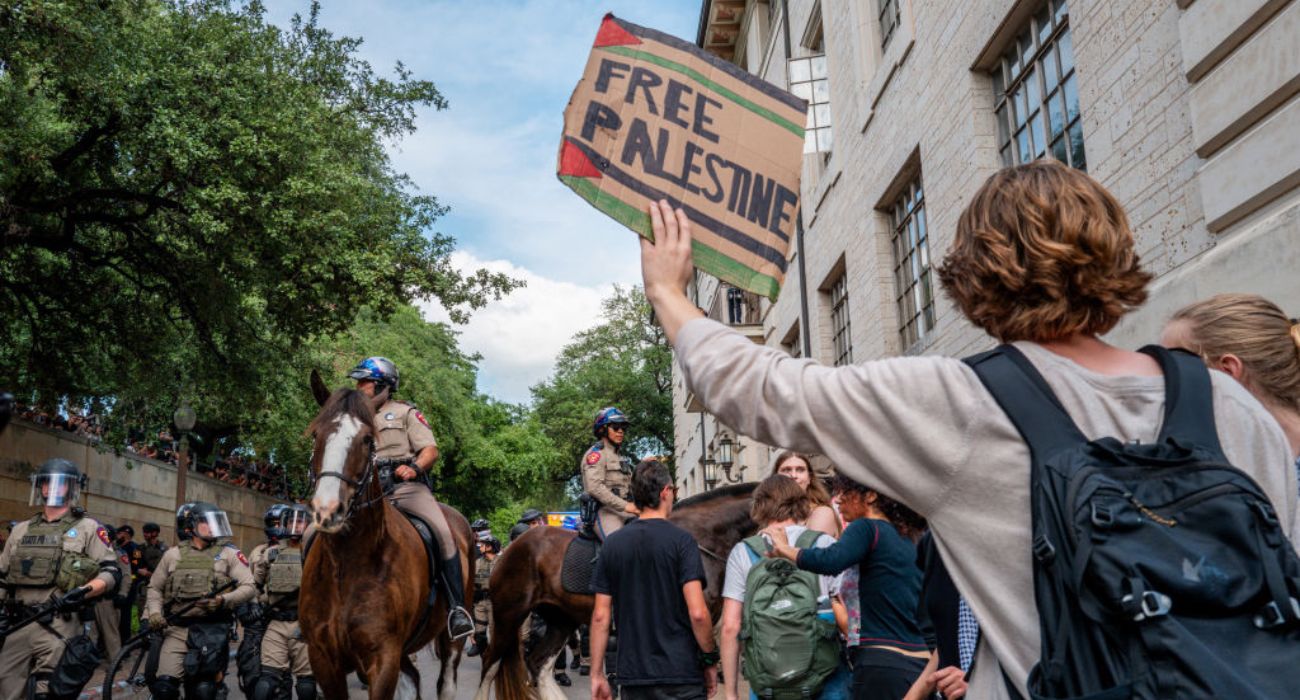June 4th, 2022 marked the 80th anniversary of the Battle of Midway in World War II. More well known are D-Day, June 6, 1944 and the Battle of the Bulge in December of 1944. With the latter two being land-battles they were able to be accessed easily, monitored, and thus receive more coverage. The Battle of Midway pitted the US Navy (USN) against the Imperial Japanese Navy (IJN) in the most significant naval battle in US history, but most Americans know little, if anything, about it
The Battle of Midway was fought in the isolation of the Pacific Ocean approximately 1500 miles west-northwest of Hawaii. Midway is a small 3 square-mile atoll, the tip of an undersea mountain, poking its sandy head highest at just less than 50 feet above the vastness of the Pacific Ocean. During the battle there was an air raid attack on the islands themselves (two main islands make up the Midway Atoll, Eastern and Sand islands), but the majority of the Battle of Midway happened at sea. For the USN it was a fine forward outpost between Japan and Hawaii but not able to provide much resistance. More like the proverbial ‘canary in the coal mine’ possibly able to alert the USN of an attack by the IJN. To the IJN, its strategic value was important as they considered it to be a steppingstone to attacking Hawaii.
The adversaries involved never saw each other from the decks of their ships.
Prior to this, especially during World War I, the Battleship had been the Queen of the seas. As each generation of new battleship offered larger and larger sizes of projectiles, being able to hurdle their devastating shells farther than the previous ships, their range finally reaching an incredible 22 miles! But slowly, in the 1930’s, the aircraft carrier appeared and made these World War I battlewagons practically obsolete. The range of the planes from a Carrier was 200-400 miles. One could now fly their projectiles to the target.
The battle took place only 6 months after Pearl Harbor. Pearl Harbor had awakened our nation that had been slumbering along ever since the Great Depression had hit in late 1929. As a result of the depression, the US military had fallen behind both Japan and Germany technologically during the 1930’s. Suddenly, an existential threat awakened the nation.
To those who know the story of the Battle of Midway, the miracle is that, with intelligence that allowed the USN to correctly know when and where the IJN would attack, the outgunned USN with a surprise ambush in store, now had a chance for victory over the IJN. There are many items one could point to during the weeks prior to the battle which one can argue contributed to the USN’s victory. The foolish decision of the IJN to not change their communications code until just before the battle; the USN’s code breaking ability, which allowed the USN to know the IJN’s attack was imminent and was definitively going to be occurring at Midway. Some would even argue, that the USN’s victory was just plain lucky.
But all was not in favor of the USN. The USN’s torpedo planes especially were devastated by the IJN during the USN’s attack, with only one USN pilot surviving and no hits to show for it. The US torpedoes of that era were simply no good. The IJN had perfected the torpedo as the primary anti-ship weapon in that time period. The IJN torpedoes were vastly superior to ours. But the sacrifice of the initial USN torpedo squadrons paved the way for the USN dive bombers to eventually devastate the 4 IJN carriers resulting in all 4 being sunk. The USN lost one carrier in the battle, the Yorktown, which had been damaged in earlier action but repaired enough to participate in the battle. But the true miracle of the victory lies with the determination of the young men (most in their late teens and early twenties) who heroically and valiantly flew their planes, many of which were obsolete, into battle, most realizing their chances of returning home was unlikely. Their bravery is to be honored and respected by all Americans. This is one of many reasons why they have been called “The Greatest Generation”. They had a depression-filled upbringing, and knew what it meant to be without. They had the will and courage to protect their country and ultimately what it meant to be victorious over peoples who wish to subjugate them.
All in, the IJN lost most of their best pilots and 4 of their top carriers. USN lost the Yorktown and our brave young men, some of whom had barely graduated from flight school. This was the beginning of the turning point in the war in the Pacific. The IJN had not lost a battle since their war in the Pacific had begun years before in 1936. The IJN now understood what fate awaited them. On the other hand, the Japanese Army, who prided themselves even more superior to even their own IJN, would have to wait another 6-9 months to learn the same lesson, once the USMC defeated them in the battle of Guadalcanal.
Why this history lesson you might ask?
It is very important to not only remember that all the freedoms, social advantages, technologies and leisure we American’s enjoy today are a direct result of those brave young men who sacrificed themselves for our country, but that we respect their sacrifice through their actions for preserving life in American.
America is not perfect, and will likely never be, all mature adults know that. Sages tell us that “Beliefs drive values, and values drive actions.” We, as a country, have always been on a journey to adjust and morph into “a more perfect union”. However, when our beliefs come into conflict it can sometimes appear that that a “perfect union” is impossible. The resulting actions are sometime ugly, violent and even deadly.
The call is to remember that, just like those brave young men who lost their lives to preserve our country on June 4th, 1942 and allowed our country’s journey to press on. We must not squander their sacrifice on issues that have minimal impact on the continued success of our nation. The fact that we can even debate and argue about such things is a precious ability frequently not afforded to those of many, if not most, other nations.
The challenge we now face, is that with a country awash in relative prosperity despite current inflation, with technology advancing at exponential rates, do we have the courage and fortitude of “The Greatest Generation” to preserve it from those who would wish to tear us down? Do we have the courage to fight for it if that time should ever come? The Greatest Generation had almost nothing to lose. We appear to have quite a bit to lose.
Will we respond to the challenges confronting us as they did? Or, will we follow the same path of collapse of the many dominate empires of the past? Can we, as a nation, be wise enough to accept our imperfections and each other, and not try to force each other to accept only our solution?
The future is up to us. Let us strive for “the more perfect union” by not requiring those we disagree with to be perfect like us, but that we come to an understanding that we have so much to lose should we not stick together. The choice is ours.







I find it that an odd factoid, the one regarding the Battle of Midway that “many Americans know little about it.” What!? Yes, the battle happened almost in the missile of the world’s largest ocean, but it was also, in my opinion, the primary turning point of World War II, and not just in the Pacific. In my belief, the turning point in the European side of the war came later in November 1942 when the Allies first landed US troops and equipment in Algeria and Morocco which eventually lead to the Nazi’ army being forcibly removed from North Africa because at that point, the Allies knew the Germans could be defeated. But going back to Midway, yes there was a little luck involved with U.S. Navy’s victory. Our spotter plans spotted the IJN first, and Dusty Kleiss spotted an IJN destroyer heading back to its fleet after chasing off a USN Submarine, outside of those small advantages, which occurred on scene, the US code breakers, Admiral Nimitz, and his staff had, in fact, tricked the IJN into giving them the last piece of their intelligence puzzle with the “broken water purifier” gambit. So, instead of biting at the IJN’s bate, which they tossed into the Aleutian Islands, the USN went all in on its own surprise attack at Midway. The most amazing fact of this battle is it took place 180 days (+/-) from the attack on Pearl Harbor… Let that sink in for a second… effectively, within 6 months after being force into World War II, having lost the bulk of its battle fleet in the Pacific Ocean, and even before landing troops in North Africa’s Operation Torch, the United States Navy had 1. Already bombed the Japanese home islands in what was probably to most symbolic military action of all time (the Doolittle Raid), and 2. Proven themselves a worthy opponent to the INJ during the Battle of the Coral Sea, Then the USN defeats the IJN at Midway. The USN defeated INJ in their own element, using their own tactics against them; effectively, kicking the door open to the western pacific. Yes the war went on for over 3 more years but the United States was now tallying under the “wins” column… So, Midway may not have been the “most” notable battle of the Second World War, but as side for the fact that US history is not being taught in schools anymore, I postulate most Americans over 40 and many younger know of the Battle of Midway. However, for those who don’t, may I suggest you take this opportunity to thoroughly research this battle, read one of the many novels of first hand accounts, or see one of the many movies and/or documentaries on the subject, yes, it’s that important. Too much said?
A very astute observation based on fact. The Naval Intel people were very clever to set up the fake message as to identify the Midway destination of the Jap destination. Had it succeeded with a Japanese victory it would have allowed a forward base to be established on Midway, thus cutting the distance from their mainland to Pearl in half.
Wonderful article!